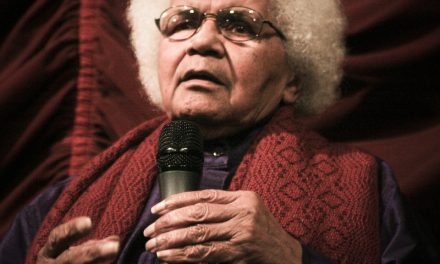Modern Classic.
These two words seem to be thrown around Kendrick Lamar more than any other modern hip-hop artist. Due to his breakout display of lyricism and mastery of flow on his debut album, Section.80, many considered Dr. Dre’s most recent protégé to be equally as skilled, and to ultimately become as widely known as his predecessor: Marshall Mathers (Eminem), a multi-platinum recording artist and both Grammy and Academy Award winner. It was not until Lamar’s universally praised sophomore album, good kid, m.A.A.d city (GKMC), that he truly began to embody those two words: modern classic.
GKMC was truly a triumph in storytelling and displayed a return to complex, multisyllabic lyricism in mainstream rap. GKMC’s lead single “Swimming Pools (Drank)” is an anti-abuse anthem under the guise of a bottle-popping club banger. “Poetic Justice” is a treatise on practicing caution with those we love, with the token Drake feature in order to appeal to radio audiences. This album balanced it all, garnering both critical and mainstream success. How could Lamar possibly top the massive crossover appeal and expectations set for his third LP?
After about a year of silence, Lamar dropped the lead single, “i,” for his then-unannounced album, To Pimp A Butterfly. Many noted how this jazz-inspired production differed vastly from his heavily west coast influenced (and Dre-executive produced) sophomore LP and wondered in which direction Lamar’s sound would go for his new album.
Over 5 months after “i,” he released “The Blacker The Berry” without notice. A rather significant juxtaposition from the joyous anthem espousing self-love, “Berry” was a gloomy, raw shout from the chains that Lamar felt himself in. While Lamar states “I love myself!” in “i,” the first words out of his mouth in his second single shout “I’m the biggest hypocrite of 2015.” As confused as people may have been about the direction of the album after the first single dropped, the second single provided no further clarity, yet it left one thing on the mind of the audience: whatever Lamar was going to do, they wanted more.
To Pimp A Butterfly, Lamar’s third studio album was announced on March 10th, 2015, then released five days later. Even from the first song it is clear that the album is a vast departure from anything that Lamar previously released.
Jazz and funk influences are rampant throughout Lamar’s To Pimp A Butterfly. From the synth-laced production by Flying Lotus to the deep, droning bass lines of acclaimed bassist Thundercat featured on the album, Lamar was clearly trying to distance himself from the work that made him so popular. Lamar was trying to change.
Change is an extremely prevalent component of this album, be it change in Lamar himself or change that he seeks in both the United States and the world. To Pimp A Butterfly is as much a statement about Lamar’ own views, as it is representative of the turmoil boiling in the United States over the past few years. The massive unrest in the United States over the deaths of Eric Garner, Trayvon Martin, Michael Brown and countless others is mirrored directly in To Pimp A Butterfly, and turned into almost a rallying cry.
Lamar morphs his previous mantra of “HiiPower,” a statement towards self-enlightenment and reflection, into a motto of black power. Lamar continues to communicate the self-love evidenced on the lead single, urging the black community to love themselves, to respect the beauty and grace that they all have. He raps that “Black man takin’ no losses” on “King Kunta.”
To Pimp A Butterfly is a highly complex piece of art that does not trouble itself with mainstream appeal, sometimes to its own detriment. At times the album may run overly long: at nearly 80 minutes and 16 songs, it is a behemoth to partake in. The album is extremely unfriendly to listen to any song out of context of the LP, as each song is both thematically and contextually dependent on the songs preceding and following it.
Lamar begins a poem at the end of the first song that is repeated and extended line by line as the album progresses from song to song with the last line in the poem foreshadowing the thematic content of the song that follows. It is revealed in the final 12-minute long track “Mortal Man” that Lamar has been reciting the poem to the deceased rapper Tupac Shakur. He then proceeds to interview Shakur, a technical innovation and example of mastery in itself.
It is in this interview that Lamar finally provides some context to the somewhat enigmatic title: To Pimp A Butterfly. It is not simply an allusion to the magnum opus of Harper Lee (To Kill a Mockingbird), but rather how Lamar sees the African-American community as a caterpillar in today’s world. Lamar believes that the beauty and grace of his people are stifled by societal constructs and conflict throughout the ages; he believes that their natural elegance and splendor is taken advantage of and “pimped” for the benefit of entertainment. With this conclusion, he not only condemns the vast majority of the hip-hop world, but also himself, truly making him the “biggest hypocrite of 2015.”
Is Kendrick Lamar’s To Pimp A Butterfly a modern classic? Does he live up to the expectations set by his universally praised good kid, m.A.A.d. city? No matter the answer, Lamar will undoubtedly go down in the annals of history as one of the most accomplished and ambitious rappers of our generation.






Lamar morphs his previous mantra of “HiiPower,” a statement towards….
HiiiPower has three i’s, not two. 🙂
Great job!